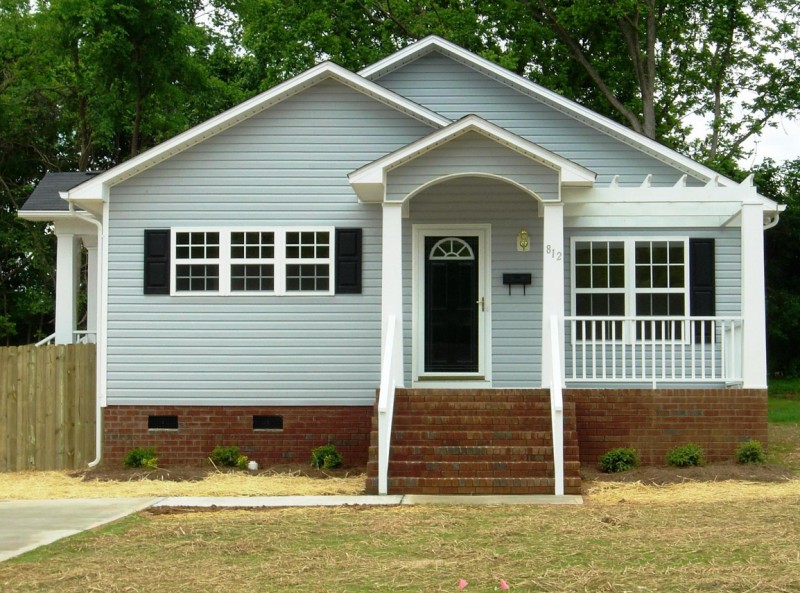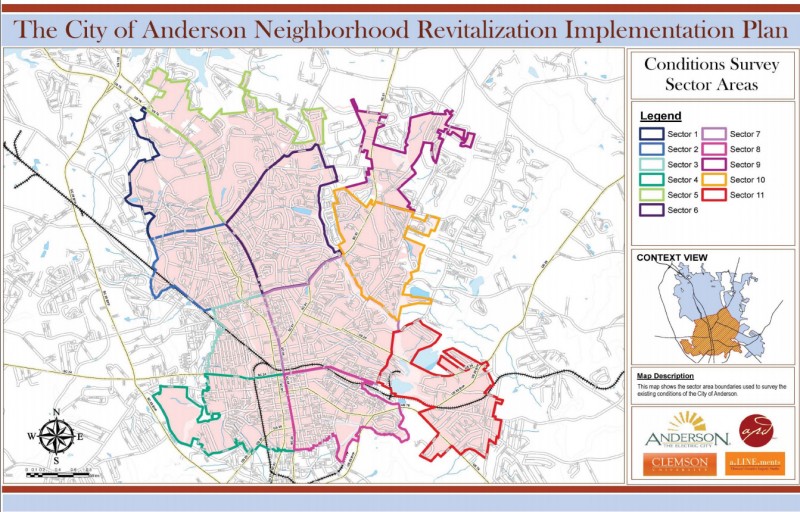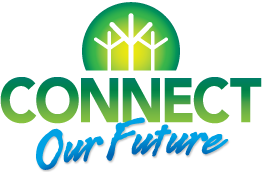The rehabilitation of existing housing stocks can help revitalize older and historic neighborhoods, provide housing for a range of income levels and special needs, and promote reinvestment. It also helps to elevate neighborhood pride in older areas of the community that may be more walkable, closer to neighborhood businesses and job locations, etc.
Why is this important to your community?
The CONNECT region is recognized as one of the fastest growing regions in the United States. However, over the last decade the housing stock in the region grew 30 percent, faster than the population itself. A high proportion of this growth was in the form of new, suburban housing units outside of or on the fringes of established urban areas. This practice may not only continue to drain the vitality of the region’s cities, but also tends to use more resources and put greater strain on municipal resources to supply needed services such as roads, sewer, water, and fire. The growth of new housing in the fringes also impacts the future residents, with projected increased transportation costs and reduced accessibility to programs, services, and amenities in city and town business districts. Newly constructed suburban housing is often out of reach for lower-income households and seniors, and not designed to support public transportation.
Housing rehabilitation offers an alternative to building all new housing units. The reuse of older, deteriorated or vacant housing in urban areas makes use of the existing housing stock, upgraded for the needs and desires of today’s population. Communities throughout the CONNECT region have attractive historic centers and early suburbs with character-rich neighborhoods, filled with sidewalks and street trees. Many of these neighborhoods offer well-built homes in need of investment and reinvigoration. Due to lower costs, these homes may offer opportunities for first-time home buyers to get their foot in the door, provide larger rental units, and cater to a variety of age groups and income levels, which can help bring neighborhoods back to life – helping both our cities and towns, and individual households. These neighborhoods can help improve the quality of life for seniors and persons with disabilities by giving these residents access to services, transportation options, and community resources. Housing rehabilitation also utilizes existing resources and infrastructure, which helps address other regional priorities by conserving rural areas and farmland and relying on existing built infrastructure like roads and utility lines.
Skip directly to
How Does It Work?
Resources
Using the Tool
Partners
Where Has It Worked?
Where is it appropriate to use?
What priorities does it address?
What other tools are related?
- Adaptive Reuse of Buildings
- Energy Efficient Residential Practices and Funding
How does it work?
Housing rehabilitation can happen in a variety of ways. The choice to rehabilitate an existing home is the choice of an individual property owner or developer, either to rehabilitate their existing home, or to purchase a “fixer-upper.” However, municipalities, counties, and non-profits can play a significant role to encourage housing rehabilitation. Most often, this comes in the form of offering financial assistance, homeownership counseling, providing the policy framework for identifying areas with potential for revitalization, and offering city incentives to developers to invest in housing rehabilitation.
Most municipalities and counties have a Housing and Community Development Department that focuses on the housing needs of the community. These departments prepare reports and oversee programs to ensure that housing needs of the entire population are met. These agencies also manage funds that are distributed by the federal government to aid in the provision of workforce and special-needs housing through the country. These funds are Community Development Block Grant (CDBG) funds (NC only), and HOME (Home Investment Partnership Program) funds. Both sources can be used for hard costs (construction of housing) or mentoring programs for populations in need (homeownership counseling, foreclosure prevention, etc.) Non-profit organizations like community development corporations (CDCs), neighborhood associations, and volunteer groups like Habitat for Humanity and Rebuilding Together are aimed at neighborhood revitalization, understanding that housing is central to any neighborhood revitalization plan. Habitat for Humanity is aimed at building new housing and restoring existing housing for populations in need. Rebuilding Together focuses on rehabilitation for low-income homeowners. A coordinated effort of proactive city planning, strong CDC and non-profit support, grassroots community momentum, and a real estate market and development community that supports rehabilitation is necessary to achieve comprehensive housing rehabilitation. As populations and technologies change, housing must be upgraded with necessary considerations for energy use and efficiency, accessibility, and contemporary appointments.
Resources
- North Carolina Finance Agency
- South Carolina State Housing Finance and Development Authority
- HOME Investment Partnerships Program
- Community Development Block Grant Program
- Rural Home Improvement and Repair Loans/Grants
- Habitat for Humanity
- Rebuilding Together
- National Community Development Association
- Americans with Disabilities Act (ADA) Design Standards
- Builders of Hope
- National Association of the Remodeling Industry
Ready to get started?
Using the Tool
Rehabilitating housing units is a multi-step process that involves understanding of the housing needs in the region and the availability of existing housing stock, available funding, and interested home buyers or residential developers. Taken from the perspective of a planner or local elected official, the steps to determine a housing rehabilitation strategy include:- Assess the housing needs of the community, understanding the types of housing that is needed. This can be done through conducted a community-based housing strategy. Identify special needs for low-income communities, persons with disabilities, and seniors.
- Conduct a study of the existing housing stock in the city or community, identifying potential areas for infill and redevelopment. Establish priority areas for housing rehabilitation and redevelopment.
- Evaluate existing and available programs and funds within the city to assist in housing rehabilitation and encourage homeownership. Evaluate if any additional funding sources are available from the state. Identify opportunities and gaps to expand funding to assist in homeownership counseling and rehabilitation. Determine if Low-income Housing Tax Credits (LIHTC), New Market Tax Credits (NMTC), historic tax credits, or Main Street Program funding have been employed in the community, and their potential application in priority areas.
- Investigate the programs and capacity of existing community development corporations (CDCs) in priority redevelopment areas around the community. Align with CDC programs to channel funds to assist in housing rehabilitation or homeownership. Establish programs if they do not already exist.
- Determine if any economic development strategies or organizations are in place in target areas, such as business improvement districts, neighborhood organizations, or similar. Consider utilizing your local government’s Neighborhood and Business Services Department (see Charlotte’s Neighborhood and Business Services Department) as a resource to track what neighborhoods are well-positioned for strategic rehabilitation. Such programs could be encouraging investment in neighborhoods that could be leveraged or expanded to encourage housing rehabilitation.
- Contact volunteer organizations such as Habitat for Humanity, Rebuilding Together, and Builders of Hope to encourage their investment in priority rehabilitation and revitalization areas.
- Interview members of the development community to determine tools needed to encourage investment in priority rehabilitation and revitalization areas. Discuss how public funds could help encourage investment in rehabilitation properties aimed at providing housing for all types of housing needs, including homeownership, rental, first-time homebuyers, low-income communities, seniors, and people with disabilities.
- Create guidelines for housing rehabilitation in priority areas that ensures that rehabilitation maintains historic character, includes desirable amenities for contemporary housing needs, is accessible for seniors and housing, and incorporates standards for energy efficiency.
- Create a comprehensive guide for housing rehabilitation that incorporates all of the above considerations. Work with your city, town, or community’s Housing and Community Development Department to oversee and implement the strategy.
Partners
- Advocacy Groups
- Community Development Organizations
Where has it worked?
Salisbury Community Development Corporation (CDC) - Salisbury, NC
 Image Source: Salisbury CDC.
Image Source: Salisbury CDC.
Contact
Chanaka V. Yatawara, Executive Director
(704) 638-4478
cyata@salisburync.govAbout the Program
The Salisbury Community Development Corporation (CDC) is a non-profit 501(c)3 organization which partners with the City of Salisbury and Rowan County to increase affordable housing opportunities and promote neighborhood revitalization within its jurisdiction. The city receives funding from the Community Development Block Grants (CDBG) and HOME Investment Partnership (or HOME program) through HUD. Salisbury CDC aids in homeownership counseling, foreclosure prevention, home rehabilitation, and reverse mortgages. The funds received from the CDBG and HOME programs are used to increase the supply of affordable housing available to citizens of Salisbury and to help eliminate slums and blight. The beneficiaries are low-moderate income families with earnings at 80% or below the area median income. Most activities are focused in specific revitalization areas where at least 51% or more of the population earns less than the threshold income and where substandard, vacant and deteriorated structures have been persistent problems.
Why it works
Salisbury Community Development Corporation (SCDC) was borne out of the efforts of residents determined to revitalize their neighborhood and provides a crucial nexus between city and county funding sources, and the boots-on-the-ground able to work directly with the community. The CDC has a full-time staff and a Board that includes representatives from prominent business owners, community groups, churches, and city officials. Because it is able to channel federal funds into its programs, the CDC has the funding to actively help contribute to incremental neighborhood revitalization and contribute to the availability of quality, affordable housing in the Salisbury and Rowan communities.
Salisbury CDC has several programs that focus primarily on housing rehabilitation. The organization is able to channel CDBG funding to provide repairs to help residents with incomes below 80 percent area median income (AMI). The HOME program helps create suitable living environments for homeowners living in unincorporated areas of Rowan County. It provides a substantial amount of home repair assistance to those who qualify and whose household income falls between 31 percent and 51 percent AMI. Thirdly, the Urgent Repair Program uses funding from the N.C. Housing Finance Agency to provide emergency home repairs to elderly and disabled homeowners and homeowners with special needs. Eligible homeowners need to have incomes below 50 percent AMI.
The Salisbury Housing Authority was the recipient of a 2012 HUD Choice Neighborhood Grant, which focused on the transformation of the West End neighborhood, including demolishing and rebuilding Civic Park Apartments, a dilapidated public housing site. The Salisbury CDC was an active community partner in the development of the plan, engaging with residents and offerings its office for community meetings. The neighborhood is now poised for the development of new housing to replace Civic Park, and lead to further revitalization of the community.Anderson Neighborhood Revitalization Implementation Plan - Anderson, SC
 Image Source: City of Anderson.
Image Source: City of Anderson.
Contact
Willie Day, Director of Housing and Urban Development
(864) 231-2287
wday@cityofandersonsc.comAbout the Program
The City of Anderson, a city with a population of 27,000, in the Greenville-Mauldin-Anderson MSA, began the Anderson Neighborhood Revitalization Implementation Plan to address blight in select focus area neighborhoods. The resulting framework plan included recommendations for land use and zoning changes, the use of Conservation Overlay Districts, and land baking as a neighborhood redevelopment strategy to stabilize neighborhoods and encourage reinvestment.
In terms of housing, the plan focused on fostering neighborhood revitalization through increasing homeownership and rehabilitation of existing housing. The plan recommended programs to increase the number of first-time homeowners and work with existing homeowners to prevent foreclosure. Infill and rehabilitation residential construction was recommended to catalyze comprehensive neighborhood development. The plan recommended potential sites for redevelopment and infill.Why it works
The Anderson Neighborhood Revitalization Implementation Plan serves a model for taking a proactive approach to neighborhood revitalization focusing on housing and neighborhood improvement. A historic city, Anderson has an existing housing stock in its core that has experienced disinvestment like many cities of its kind, but with great character, historic architecture, and high potential for renaissance. The plan identifies a planning area that is neither neighborhood-specific nor citywide, but rather grouped communities with similar concerns together to identify common strategies.
Though the plan focused on a variety of topics other than housing, including transportation, urban design, and commercial development, the plan places emphasis on the importance of housing rehabilitation to achieving neighborhood revitalization. The plan includes model block layout, floor plans and elevations for rehabilitation of historic homes. Anderson encouraged rehabilitation of housing not only to retain community character, but to welcome a variety of income types and housing needs. To this end, the following housing policies are recommended:
- Expanding the supply of decent, safe, sanitary, and affordable housing
- Encourage rehabilitation standards as part of the overall approach to both minor and major rehabilitation and demolition
- Homeowners improvements
- Homeownership Training that prepares families and individuals to transition from rental to owner-occupancy
- Financial incentives that encourage Investor-owners to reinvest in their property
- Use of Code Enforcement as a strategy for revitalization
- Outreach and marketing as part of the overall approach to encouraging rehabilitation
- Targeted marketing of vacant/abandon homes and vacant lots to moderate/middle income homebuyers to facilitate mixed-income communities
- Preserve the pride of homeownership
- Leverage new single-family infill for revitalization
- Promotion of energy efficiency among lower-income households
- Community Development Organizations
- Energy Efficient Residential Practices and Funding


